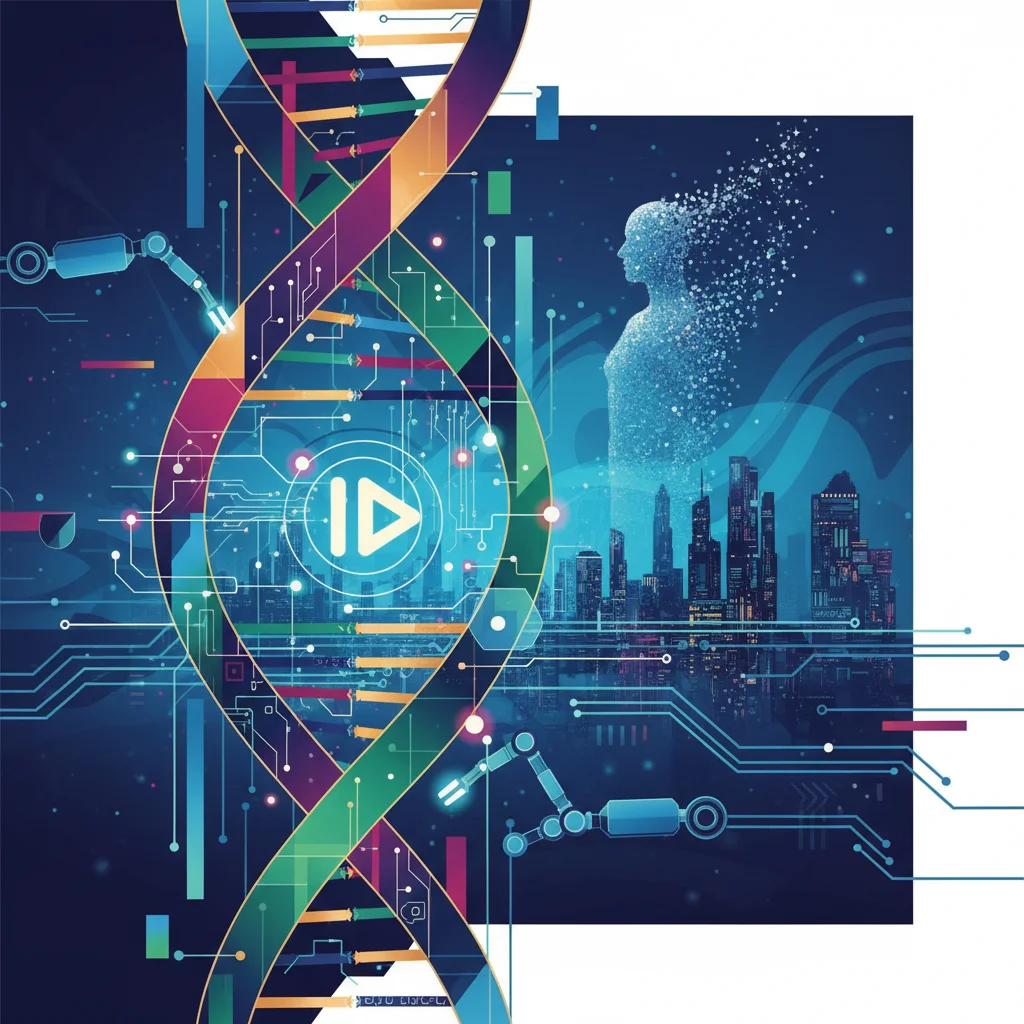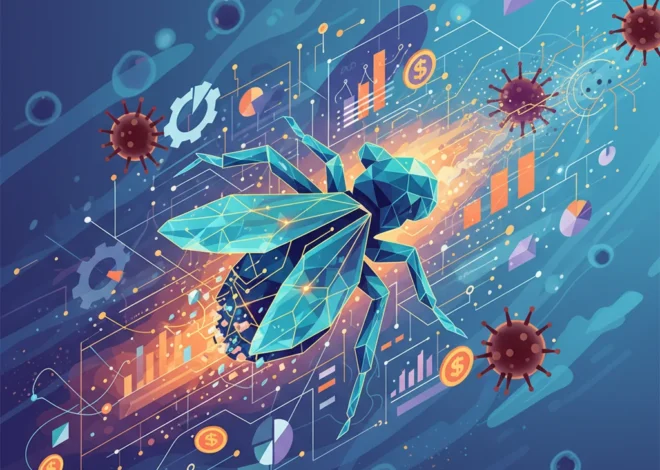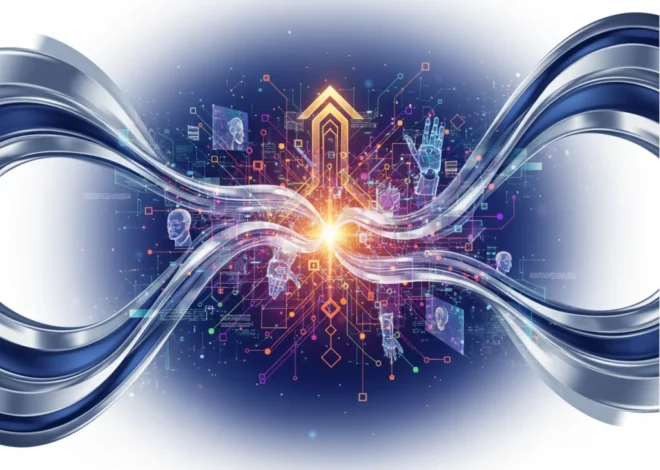
The Ultimate Debug: How AI and Startups Are Taking on Human Aging
What if I told you the most complex, self-replicating, and sophisticated piece of software ever written is running inside you right now? It’s your DNA—a 3-billion-letter code that has been beta-tested and iterated upon for millennia. But like any legacy system, this code accumulates bugs, performance degrades, and eventually, it crashes. We call this process “aging.”
For centuries, we’ve accepted aging as an inescapable fact of life. But in the worlds of technology and entrepreneurship, an “inescapable fact” is just a problem that hasn’t met the right team, the right funding, or the right algorithm yet. A new generation of scientists, developers, and investors is reframing aging not as a destiny to be accepted, but as a technical challenge to be solved. They’re asking a radical question: Can we debug our own biology?
The quest to understand and reverse aging is no longer confined to biology labs. It has become one of the most exciting frontiers for innovation, attracting talent and capital from the tech world. This isn’t about finding a mythical fountain of youth; it’s about applying the principles of engineering, software development, and data science to the human body. Let’s explore the origins of this biological “technical debt” and how cutting-edge tech is being deployed to refactor our very code of life.
The Two Schools of Thought: Is Aging a Bug or a Feature?
In the world of programming, software can fail for two primary reasons: an accumulation of errors and corruption over time (bugs), or a pre-programmed limitation designed into the system (a feature). Intriguingly, the scientific community is similarly divided on why we age. The debate, as outlined in a deep-dive by the Financial Times, boils down to two main theories.
The first is the “damage accumulation” theory. This is the “bug” hypothesis. It posits that aging is the result of a lifetime of wear and tear. Think of it like data corruption. Cosmic rays, metabolic byproducts, and replication errors constantly introduce tiny flaws into our DNA and cellular machinery. Our bodies have sophisticated error-correction and repair systems, but they aren’t perfect. Over decades, the unpatched bugs and corrupted data build up, leading to system-wide failure—what we recognize as the diseases of old age.
The second is the “programmed aging” theory. This is the “feature” hypothesis. It suggests that aging isn’t an accident but an intentional, genetically-controlled process—a kind of planned obsolescence. From an evolutionary perspective, this makes a certain cold-hearted sense. Once an organism has reproduced and passed on its genes, it becomes a competitor for resources. A built-in self-destruct sequence could benefit the species as a whole. Evidence for this includes the behavior of “zombie” cells (senescent cells) that stop dividing but refuse to die, secreting inflammatory signals that damage surrounding tissues.
Understanding which theory holds more weight is critical. If aging is just damage, the solution is better repair and maintenance—a cybersecurity-like approach of patching vulnerabilities. But if it’s a program, the challenge becomes far more profound: we need to find the master algorithm and rewrite it.
To clarify these competing ideas, here’s a breakdown comparing the biological concepts to their tech analogies:
| Theory of Aging | Biological Mechanism | Tech Analogy | Proposed Solution |
|---|---|---|---|
| Damage Accumulation (Bug) | DNA mutations, protein misfolding, telomere shortening from external and internal stressors. | Accumulated bugs, memory leaks, and data corruption in a long-running software application. | Develop better “debugging” and “data recovery” tools (e.g., therapies that clear out damaged cells or repair DNA). |
| Programmed Aging (Feature) | Genetically-controlled pathways, epigenetic clocks, planned cellular senescence. | A pre-programmed end-of-life (EOL) function in a software license or a hardware kill switch. | Reverse-engineer the “source code” to disable or modify the EOL function (e.g., epigenetic reprogramming). |
The exciting part is that these two theories might not be mutually exclusive. It could be a program that, over time, becomes less effective at repairing damage. Regardless, the race is on to develop interventions for both.
Your Wallet, Now Powered by ChatGPT: Inside the Landmark OpenAI and Intuit Deal
The New Arsenal: How AI and Cloud Computing Are Cracking the Code
For decades, aging research was a slow, painstaking process of trial and error. But today, the field is being supercharged by the same tools that power modern tech startups. At the forefront of this revolution are artificial intelligence and machine learning.
The human genome contains about 3 billion base pairs. The epigenome, which controls which genes are turned on or off, is orders of magnitude more complex. Analyzing this vast dataset to find the subtle patterns that govern aging is a task perfectly suited for AI. Researchers are now using machine learning models, running on powerful cloud infrastructure, to:
- Identify Biomarkers of Aging: AI algorithms can analyze blood samples, DNA methylation patterns, and other data to build “aging clocks” that are far more accurate than chronological age. This allows scientists to quickly measure if a potential therapy is actually working.
- Model Cellular Systems: Scientists are building “digital twins” of human cells and organs. These complex simulations, powered by AI, allow them to test interventions in a virtual environment before ever moving to a clinical trial, saving immense time and resources.
– Discover Anti-Aging Compounds: Instead of testing thousands of molecules randomly in a lab, machine learning models can predict which compounds are most likely to have a desired effect on specific aging pathways. This massively accelerates drug discovery through intelligent automation.
Companies like Altos Labs, a well-funded startup that has attracted Nobel laureates, are betting big on a specific approach called cellular reprogramming. As reported by the FT, their goal is to effectively reset the “epigenetic clock” within our cells, making them biologically younger. This isn’t science fiction; the technique has already been used to rejuvenate cells in a dish and even restore sight in older mice (source). The challenge now is to translate this into safe, effective therapies for humans—a challenge that relies heavily on AI-driven data analysis.
AI's Trillion-Dollar Question: Is the Tech Boom an Echo of the Dot-Com Bubble?
But the perils are just as significant. What are the societal implications if these therapies are only available to the ultra-wealthy, creating a biological divide between the long-lived rich and the rest of us? What are the cybersecurity risks of having our most intimate biological data stored on the cloud, ripe for exploitation? And are we prepared for the economic and environmental impact of a global population that lives for 120 or 150 years? These aren’t just technical problems; they are profound ethical and societal challenges that we need to start debating now, long before the first “immortality pill” hits the market. The goal shouldn’t just be a longer life, but a better and more equitable one.
The Longevity-as-a-Service (LaaS) Ecosystem
Where there is massive R&D and complex data, a vibrant ecosystem of tools and platforms inevitably follows. We’re seeing the emergence of a “Longevity-as-a-Service” model, where specialized startups provide the picks and shovels for the gold rush.
This includes:
- Data Platforms (SaaS): Companies building cloud-based SaaS platforms to manage and analyze the colossal datasets from genomic sequencing, clinical trials, and biomarker tracking.
- Lab Automation: Robotics and automation are crucial for high-throughput screening of potential drugs, reducing manual labor and human error in the research phase.
- AI-Powered Diagnostics: Startups are developing AI tools that can predict age-related diseases years before symptoms appear, shifting medicine from a reactive to a proactive model.
This entire industry is a testament to the power of interdisciplinary innovation. It requires biologists who understand code, data scientists who understand cell biology, and entrepreneurs who can navigate the complex regulatory landscapes of both tech and medicine. This fusion is creating one of the most intellectually and financially compelling fields of the 21st century.
The Day the Internet Stood Still: Deconstructing the Cloudflare Outage That Silenced X and ChatGPT
The Final Frontier: From Debugging to a System Upgrade
The journey to conquer aging is just beginning. We are moving from simply observing the “bugs” of aging to understanding their root causes in our biological source code. The tools we’re building—powered by artificial intelligence, run on the cloud, and driven by the relentless pace of startup innovation—are allowing us to probe, model, and manipulate our biology in ways that were unimaginable just a decade ago.
Will we achieve immortality? Probably not. But could we extend the healthy human lifespan by decades, eliminating the suffering caused by diseases like Alzheimer’s and osteoporosis? That seems increasingly plausible. Aging is, perhaps, the final boss of human challenges. It’s a deeply personal, philosophical, and now, technical problem. And for the first time in history, the tech community has the tools to join the fight, turning what was once a conversation about death into a conversation about software updates.


